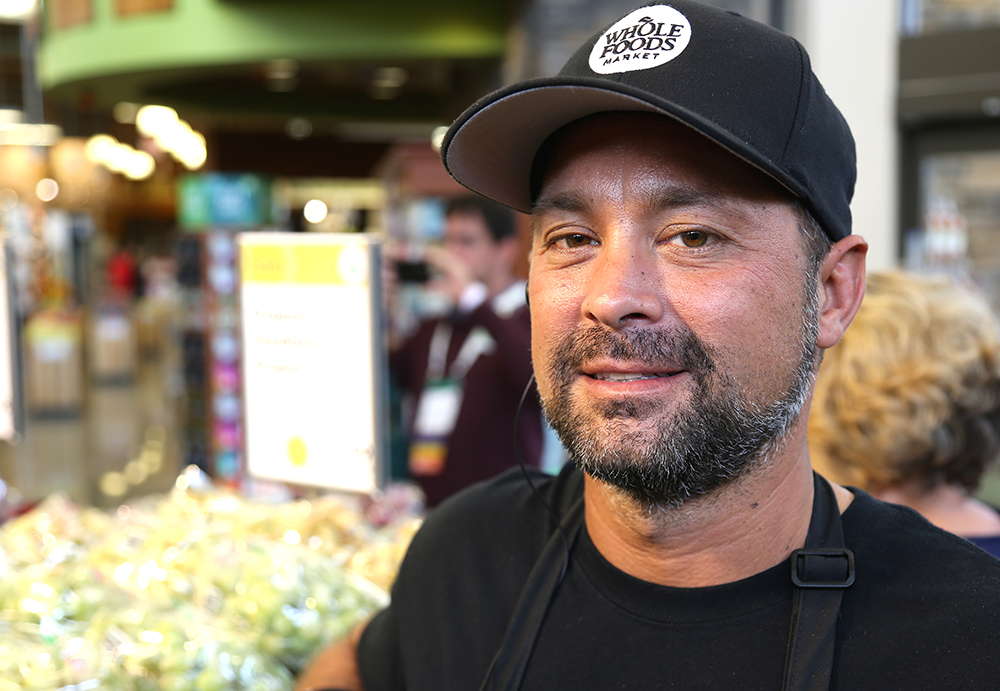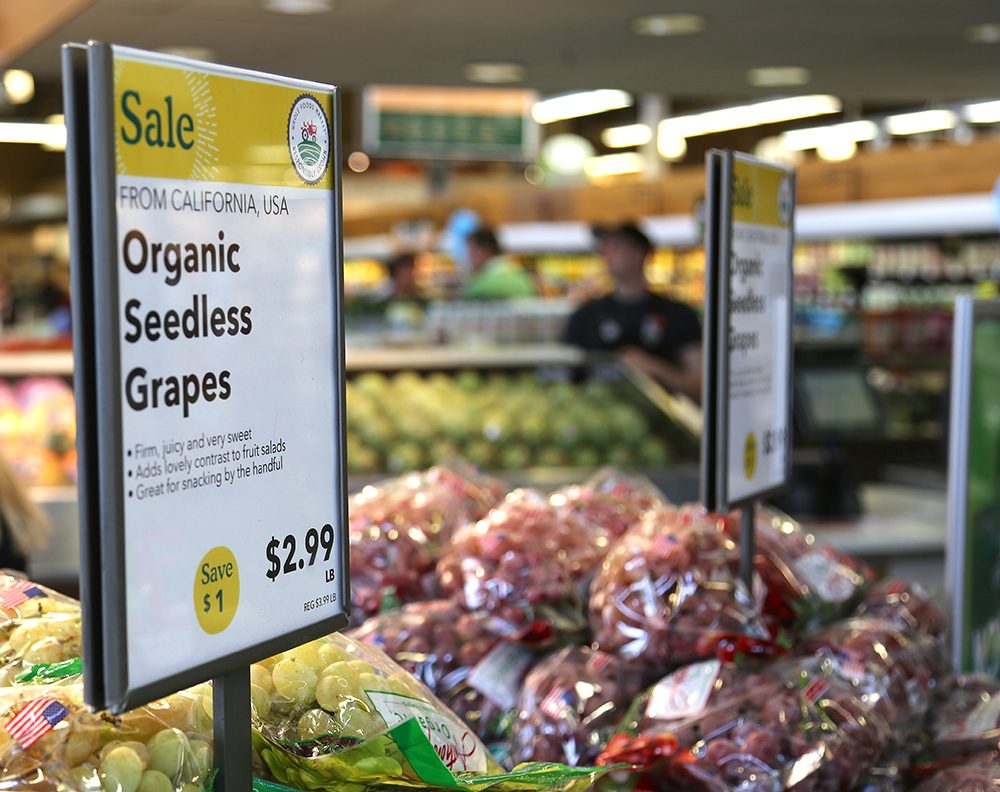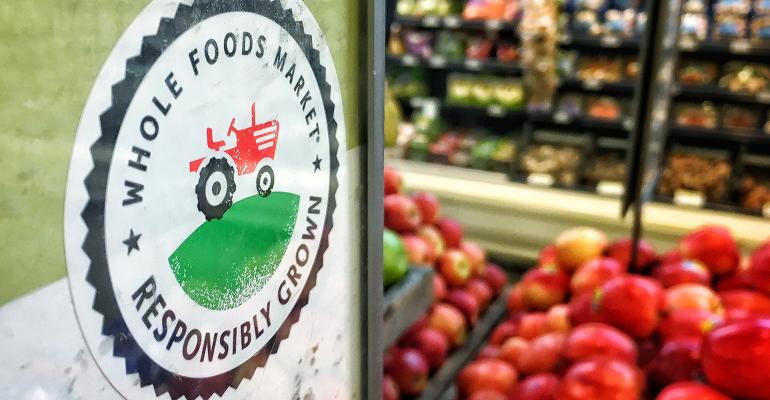Whole Foods Market has completed the rollout of its simplified “Responsibly Grown” in-store produce labeling that was initiated last year.
The Austin, Texas-based company, with more than 435 stores, earlier this year committed to system-wide streamlining of its earlier three-step good-better-best fresh produce labeling to a one-size-fits-all Responsibly Grown label, said Erik Henderson, produce manager at the Turkey Lake Road Whole Foods in Orlando, Fla.
“This is easier for our customers to understand,” said Henderson. “And it’s a lot easier for us to manage, so it’s a win-win for everybody.”

Edmund LaMacchia, Whole Foods global VP of perishable purchasing and the primary executive over the Responsibly Grown program, in January outlined the modifications in the program that first debuted in summer 2014.
“We launched Responsibly Grown with the goal of creating a dynamic program that we would continuously evolve with our suppliers to address important agriculture issues affecting human health and the environment,” LaMacchia said in a blog post.
The good-better-best label created some confusion for customers and producers as well as creating challenges for produce managers.
“We were having to separate each grower’s products on the stand,” Henderson said, “and having to label each separately with the good, better or best. We also had some conventional farmers with produce that was rated ‘best,’ and some organic farmers that weren’t rated at all.”
Henderson said the new Responsibly Grown designation includes organic farmers as well as conventional producers who have gone through the Whole Foods rating process.

Floral vendors participate in the Responsibly Grown program as well, Henderson noted.
The Responsibly Grown program started in 2015 at a few trial stores, including the Orlando Whole Foods, Henderson explained.
“We gave feedback,” Henderson said, “and we realized that the good-better-best wasn’t giving an even playing field for all the growers. This encourages people to do their best every day.”
LaMacchia said the new labeling came with an update on Whole Foods’ prohibited pesticide list and added support and training “to help our growers through the onboarding process and new food safety regulations and traceability requirements.”
Whole Foods’ program also evaluates other areas of sustainability, such as farmworker welfare, pollinator protection, water conservation, soil health ecosystems, biodiversity, waste, energy use, recycling and packaging.





